These food copywriting examples highlight effective strategies you can use to write scrumptious copy—and build your brand!

Flavorful writing that’s also functional? It’s all about technique!
Food copywriting is hard work—especially when it’s part of a new product launch, brand building, or efforts to grow sales.
You need a pinch of imagination, a dash of creativity, and a generous serving of freshness. After all, what you write has to be tasty and nutritious. Appealing but also purposeful. Awesome and effective.
Well, that’s no piece of cake. But well-written examples of food copywriting – plus an exploration of the techniques used – always help to get those creative juices flowing! So let’s get cracking.
Food copywriting examples and the winning strategies behind them
How do you write mouth-watering copy that gets your food products flying off the shelves, selling like hot cakes? These examples will show you.
Technique #1: Add a dash of humor
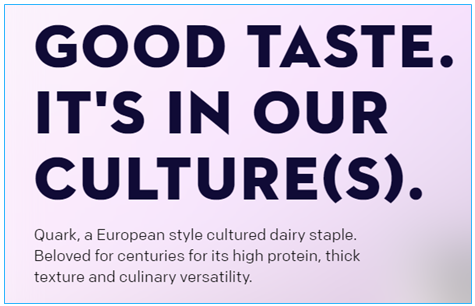
Why we love this example: It’s witty without trying too hard. If you get the joke, great! If you don’t, there’s nothing lost—the statement stands on its own. In fact, the clever use of words gets an important point across about product quality as well as this brand’s guiding principle. Two birds with one stone!
Why this strategy is a winner: Humor – like puns and word play – can add some much-needed personality as well as a whole other dimension to your food copywriting.
Takeaway: The tricky thing about ‘humor’ is that it’s hard to get right. What’s funny for you may not be funny for me. What makes me laugh out loud could be offensive to you. If you want to veer on the safe side, test your copy out on colleagues, family and friends first—even if you’re a brand that’s not afraid to take chances or ruffle a few feathers here and there!
Bonus tip: Humor alone won’t cut it. You must always follow up with substance. In the above example, the copy beneath the headline explains what quark is (for the uninitiated) and throws in several reasons why you’ll want to add this item to your grocery list.
Technique #2: Use alliteration
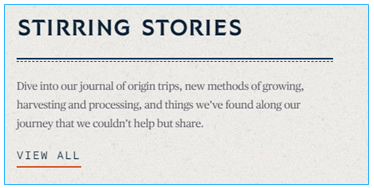
Why we love this example: “Stirring Stories” sounds so much better than something typical (read: boring) like “Our Stories” or “Coffee Stories”. And that’s thanks to repeated consonants—a ‘trick’ that works wonders in copywriting!
Why this strategy is a winner: The initial rhyme – also called a head rhyme – catches the eye, reinforces the point you’re trying to make, and makes text so much more memorable. That’s three benefits using just one technique!
Takeaway: Alliteration – like everything else – is best used in moderation. If you use this strategy everywhere, all the time, then it won’t have the same impact anymore. It loses its oomph.
Technique #3: Strike a conversation

Why we love this example: This description is simple, honest, and down to earth. Frankly, it sounds like something your neighbor would say before handing over a jar of homemade jam!
Why this strategy is a winner: It’s authentic. This conversational style humanizes a brand and that makes the interaction feel real. The result is that you trust the purveyor and feel happy about adding their item to cart.
Takeaway: Even though our tendency might be to shout how AWESOME our products are from the rooftops, a humble approach – for lack of a better term – can actually have more impact. For one, you’re viewed favorably rather than with skepticism.

Technique #4: Less is more
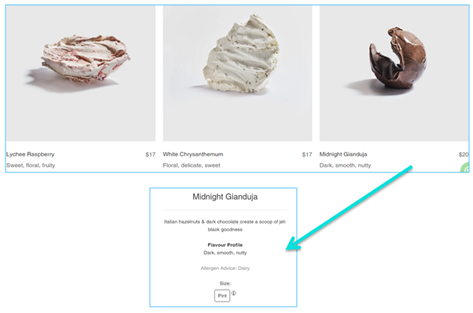
Why we love this example: It’s straight to the point! Is this what I’m in the mood for today? What’s this flavor like? Those questions are answered in just 3 (descriptive) words.
Why this strategy is a winner: It’s super easy to read and saves the reader time. You don’t have to read paragraphs of text to figure out what this gelato is like. Put another way: You don’t risk losing readers’ interest.
Takeaway: Crisp and concise doesn’t have to mean boring. And it doesn’t always mean a lack of information!
Bonus tip: This minimalist food copywriting strategy won’t work for all products. It’s important to distinguish when short and sweet is appropriate and, conversely, where fleshing out your description is the smarter move. Also be aware of how this affects SEO.
Technique #5: Make use of numbers
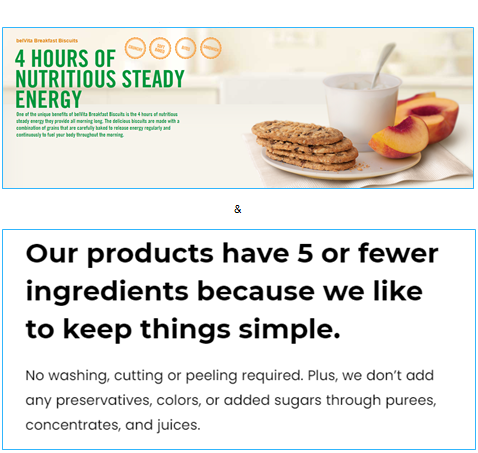
Why we love this example: These are examples from 2 different brands. In both instances, numbers in their respective headlines amplify their key benefits.
Why this strategy is a winner: Numbers grab attention, strengthen copy and drive key points home—quickly! Numbers naturally draw the eye to a crucial segment in your copy like benefit(s) or for social proof.
Takeaway: Numbers enhance credibility, so while they might normally make you shudder, don’t avoid them in copywriting!
Bonus tip: When it comes to numbers, you can’t just throw in a few here and there and expect them to work wonders. You need to be discerning— and strategic—to reap the benefits. Know when to use them and, more importantly, where to use them for maximum effect.
Technique #6: The natural use of descriptive keywords
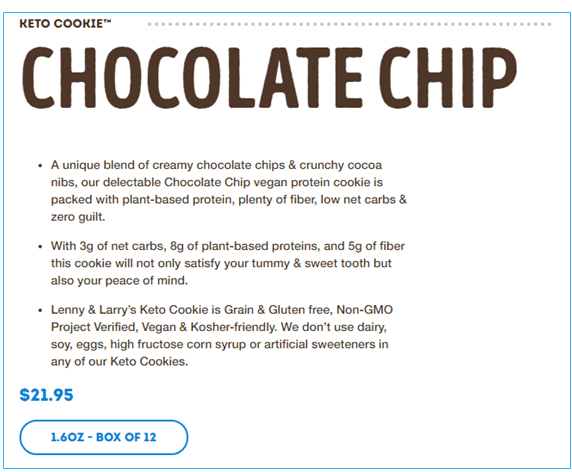
Why we love this example: Three bullet points packed with information and yet not overwhelming at all. The best part? You can already taste these cookies!
Why this strategy is a winner: Craving aside, the right keywords, that is descriptive, relevant and naturally woven into your food writing, don’t just make your copy delicious—they are necessary for strong SEO. And when your SEO does its job, you get all-around better results from awareness through to sales.
Takeaway: This strategy does not mean going heavy-handed with keywords. Rather it’s about integrating them organically into your text. The end result should be seamless and appear effortless (when we all know it actually wasn’t).